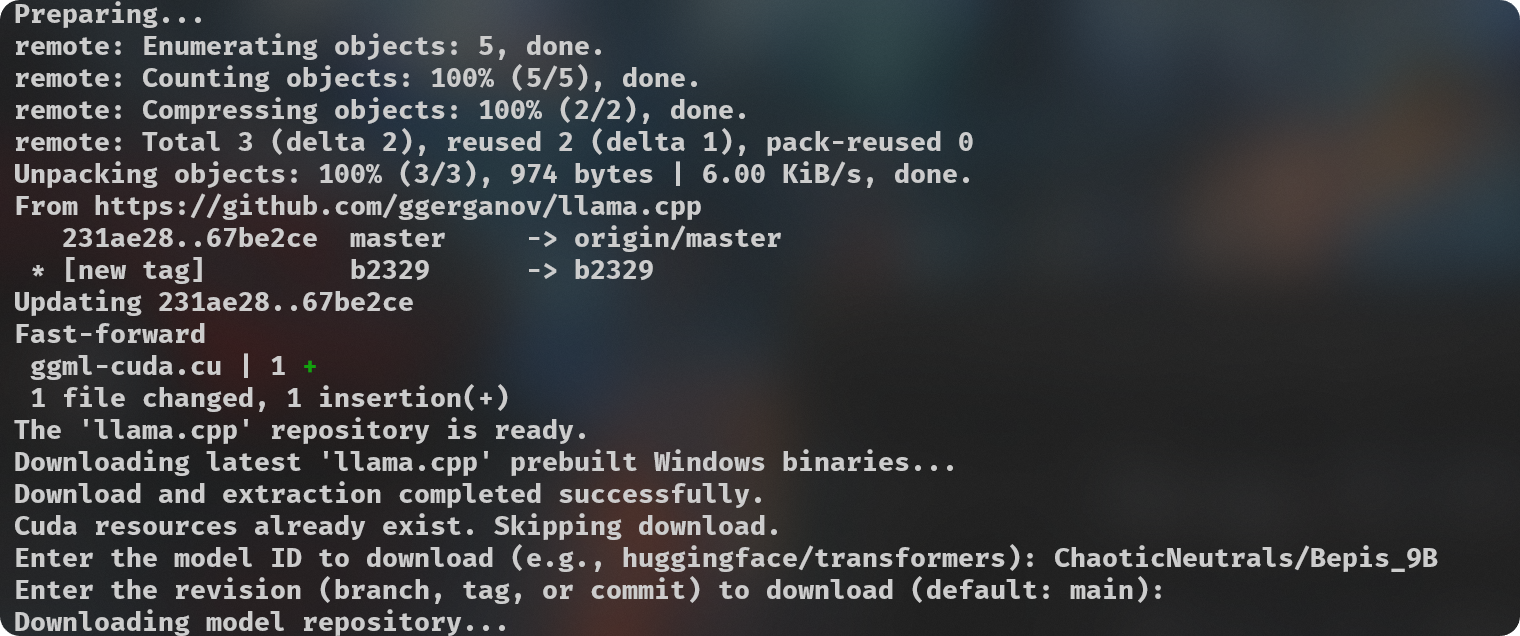license: cc-by-nc-4.0
inference: false
pipeline_tag: text-generation
tags:
- gguf
- quantized
- text-generation-inference
Credits:
Feel free to Pull Request with your own features and improvements to this script.
If this proves useful for you, feel free to credit and share the repository.
Made in conjunction with @Lewdiculous.
GGUF-IQ-Imatrix-Quantization-Script:
Simple python script (gguf-imat.py) to generate various GGUF-IQ-Imatrix quantizations from a Hugging Face author/model input, for Windows and NVIDIA hardware.
This is setup for a Windows machine with 8GB of VRAM, assuming use with an NVIDIA GPU. If you want to change the -ngl (number of GPU layers) amount, you can do so at line 120. This is only relevant during the --imatrix data generation. If you don't have enough VRAM you can decrease the -ngl amount or set it to 0 to only use your System RAM instead for all layers, this will make the imatrix data generation take longer, so it's a good idea to find the number that gives your own machine the best results.
Your imatrix.txt is expected to be located inside the imatrix folder. I have already included a file that is considered a good starting option, this discussion is where it came from. If you have suggestions or other imatrix data to recommend, please do so.
Adjust quantization_options in line 133.
Models downloaded to be used for quantization are cached at
C:\Users\{{User}}\.cache\huggingface\hub. You can delete these files manually as needed after you're done with your quantizations, you can do it directly from your Terminal if you prefer with thermdir "C:\Users\{{User}}\.cache\huggingface\hub"command. You can put it into another script or alias it to a convenient command if you prefer.
Hardware:
- NVIDIA GPU with 8GB of VRAM.
- 32GB of system RAM.
Software Requirements:
- Git
- Python 3.11
pip install huggingface_hub
Usage:
python .\gguf-imat.py
Quantizations will be output into the created models\{model-name}-GGUF folder.
